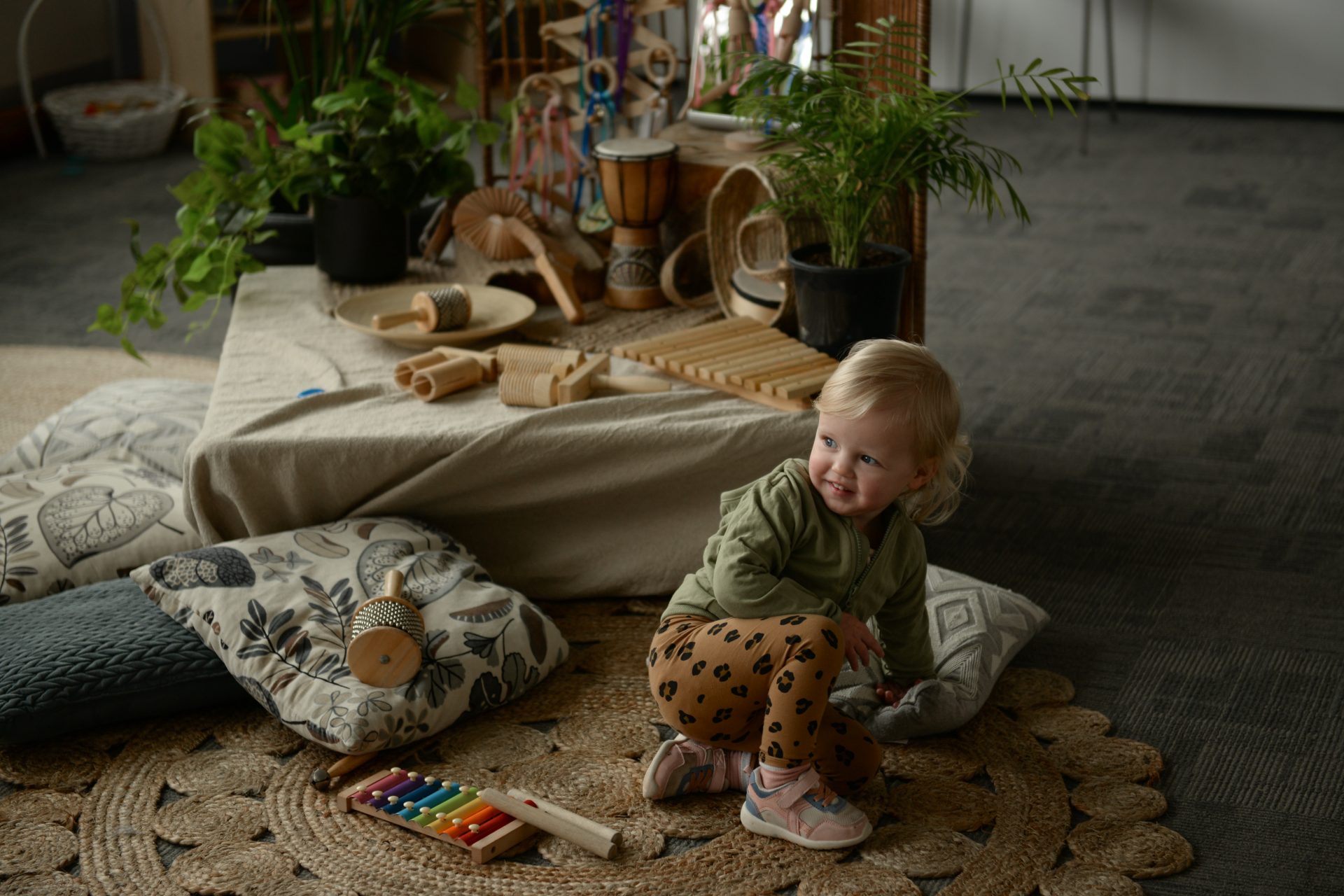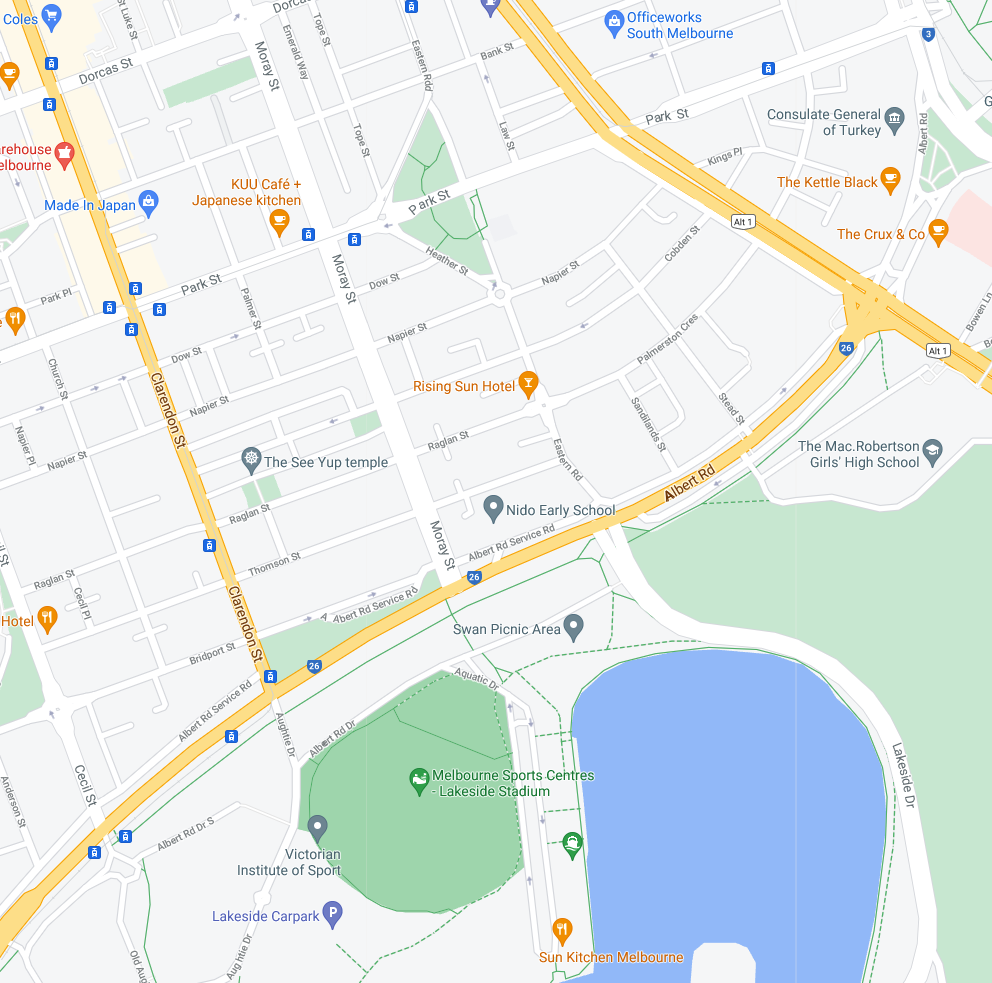
When you watch young children at play, you’ll quickly see that they’re drawn to things that they can manipulate, move around, take apart, combine, manipulate and interpret.
The concept of ‘loose parts’ was formalised after British architect Simon Nicholson published a paper on the topic in 1971. He had been researching the impact of various environments on people’s imaginations and creativity, and after observing how they were noticeably more captivated by interactive art installations, he developed a theory that the more variables that an environment had, the more engaging, stimulating and creative it became.
Nicholson’s theory is now widely applied in childcare and early learning environments and the benefits and outcomes of this ‘loose parts play’ are significant. Let’s take a closer look.
What does ‘loose parts play’ involve?
The key principle of loose parts play is that the elements involved shouldn’t have a pre-determined association. For example, a train set and miniature house are both great toys, but because their function is already established, the opportunities for creative interpretation are limited.
By contrast, loose parts play involves objects and materials that don’t have a predetermined use.
It involves random open-ended items such as those found around the house, the garden, the park, the recycling bin. These can be used, adapted and combined in a myriad of ways when children use their natural curiosity and creativity.
A cardboard box can be a tank, a castle or a stable. A wooden spoon can become a wand, a conductor’s baton, a fishing rod or a drumstick. A piece of fabric can become a cloak, a magic carpet, a paddock. A wooden block can be a doll’s bed, a car, a cake, a mountain.
Sticks, pebbles, leaves, sand, water, blocks of old timber, ribbons, sponges, scraps of fabric, foam offcuts, buttons and kitchen utensils are all loose parts with endless possibilities - and the great thing is all these items can be used in different ways by children of varying ages and stages. What they choose to do with them and how they interpret them is up to their imaginations and their interests.
Loose parts play and Reggio Emilia
The joy of loose parts play is that it feeds children’s imaginations.
It allows children to do the thinking and creating, it allows them to test theories and to experiment and it allows them to use their imaginations freely - and the more of these variables that children have to play with, the better.
You’ll find that loose parts are a central feature of Reggio Emilia-inspired early learning environments, because this educational approach embraces child-led open-ended play. Young children are empowered to explore and discover the world at their own pace, using resources of their own choice. You can read more about this innovative approach in this article entitled ‘The Reggio Emilia Approach and How it Benefits Your Child’.
Benefits of loose parts play
Loose parts provide children with infinite possibilities for unleashing their creativity. They allow children to be active thinkers. Children can move the objects, change them, control them, line them up, construct with them, deconstruct them, mix them up and assign any role they like to them to create their own scenarios and stories.
Here are some of the ways that fun and joyous loose parts play promotes children’s healthy development and learning:
- Encourages creativity, imagination, exploration and discovery
- Develops their self-confidence
- Develops problem-solving and critical thinking skills
- Encourages teamwork and co-operation
- Supports the development of social skills
- Promotes emotional development
- Enhances gross and fine motor skills
- Helps with the development of language, communication and literacy skills
- Helps them learn listening skills and develop empathy for others
Loose parts play also teaches children about sustainability. They learn to use items found in nature and they learn to reuse or repurpose items instead of consigning them to landfill - so it promotes a healthier relationship with the environment. Using loose parts for playtime is also inexpensive.
How do parents and educators facilitate loose parts play?
The role of the educator and of the parent or caregiver in the home is to observe, support and encourage the child’s learning through loose parts play - rather than try and direct the process or step in when a problem arises. Supervising adults should allow children to learn through trial and error, to problem-solve for themselves, to experiment, to make up rules, to interpret materials and to play freely - and just be there for support, encouragement and facilitation.
Parents can have a ‘loose parts’ box in the home which children can explore, add to, change etc.
Allow children the time to play and experiment with the parts. Don’t step in when a problem arises or when they make the same mistake over and over. And even if you don’t agree with their rules of the game - let them work out a way forward and problem-solve on their own. Of course, you can support and facilitate their play by asking questions like ‘What else could you try?” and “Why do you think that is happening?”
Loose parts play at Evoke Early Learning
Loose parts are a key part of everyday life at Evoke Early Learning and an ever-changing variety of open-ended materials are always available in our classrooms and outdoor environments to inspire our little ones to create, explore, discover and learn.
We welcome you to book a tour of our safe, secure and welcoming Albert Park or Clayton Childcare Centres where our mission is to provide each child with the foundation for the future skills and abilities they need to succeed. We look forward to meeting you!

Tracey is a highly qualified educator and administrator and brings a strong combination of academic achievement, extensive work experience in the education and business sectors as well as drive and passion to her role as General Manager of Operations at Evoke Early Learning.
Tracey has a Master of Education and an Advanced Diploma of Business and holds VIT Dual Registration to teach in Early Childhood and Primary School settings. She’s also a VIT Trained Mentor Teacher and has worked in ECEC settings as a Director, Educational Leader and as a Victorian Senior Area manager. Her recognition as a state finalist in the recent Director of the Year Awards is testament to her achievements in the early education sector.
Her extensive work experience also included a stint as Head of Curriculum at the Royal Children’s Hospital Education Institute and positions as head of ICT at a number of large primary and secondary schools. Tracey is also experienced in not-for-profit sessional kindergarten settings and long daycare environments, so she has a deep understanding of what’s required to support the needs and expectations of young children, educators, parents and caregivers.
Tracey is responsible for operational management at Evoke Early Learning’s Clayton centre in Oakleigh East and their Albert Park centre in South Melbourne and is deeply committed to leading and driving effective and sustainable service delivery throughout the company.
Tracey is passionate about making a meaningful difference to young children, their parents and the wider community and under her expert guidance, Evoke Early Learning is continuing to raise the bar in quality early education and childcare.


